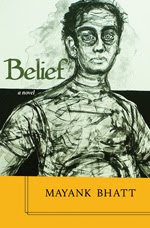 The performance remained engaging throughout as the concept aimed at creating a synthesis between classical and popular artistic expressions. Enakshi Sinha conceptualized, choreographed and directed the performance, with Srijan Chatterjee developing the concept. Nivedita Bhattacharjee’s script and Krishnakali Sengupta’s narration holds together the performance that is four stories that are distinct if not disparate. Neelay Sengupta designed Enakshi’s costumes, and Enakshi’s students joined her in the performance.
The performance remained engaging throughout as the concept aimed at creating a synthesis between classical and popular artistic expressions. Enakshi Sinha conceptualized, choreographed and directed the performance, with Srijan Chatterjee developing the concept. Nivedita Bhattacharjee’s script and Krishnakali Sengupta’s narration holds together the performance that is four stories that are distinct if not disparate. Neelay Sengupta designed Enakshi’s costumes, and Enakshi’s students joined her in the performance.Sunday, August 26, 2018
Mirage – the Musical
Mirage – the Musical was a bravura performance of three talented artists – Enakshi Sinha, the dancer, Parag Ray, the singer and Nadeem Ali, the musician – who came together to produce a dance ballet depicting a woman’s love as expressed by four eternal lovers from Indian myths and mythologies, both modern and traditional.
The lovers were Heer, Chitrangada, Chandramukhi and Yogini – the selection of these lovers was eclectic, and the depiction of their angst was aimed at appealing to the diverse audience at Mississauga’s Living Arts Centre.
The story of Heer and Ranjha is the mainstay of Punjabi folklore across both sides of the artificial borders of Punjab.
Chitrangada is a character from the epic Mahabharata (Arjun’s wife when he is exiled). She is raised as a man by her father and is adept at warfare, but falls in love with Arjun and begs the god of love – Madan – to transform her into a beautiful woman.
She succeeds in enticing Arjun to love her. She has to reveal her skills when her father’s kingdom is attacked, and Arjun is so impressed by a complete woman that he insists on marrying her. The denouement is tragic in the original epic, with Chitrangada’s son defeating Arjun. But what we know of the story is through Rabindranath Tagore’s eponymous play. Tagore’s interpretation of Chitrangada is of a woman who knows what she wants and knows how to get it.
Sharatchandra Chattopadhyay gave us an epic in Devdas, the story of star-crossed lovers Paro, Devdas and Chandramukhi. Bimal Roy immortalized the epic on celluloid in 1955 with Dilip Kumar enacting Devdas’s role and Vyjayathimala performing Chandramukhi’s role and Suchitra Sen playing Paro. Chandramukhi’s love for Devdas is unrequited, but she doesn’t give up hope.
Yogini is woman mendicant who eschews the material world for the spiritual solace.
Traditional Odissi involves four distinct stages of story narration – invocation, nritta, nritya, moksha. The depiction of these four characters follows this sequence, although Enakshi Sinha interpreted the stories and the dance to suit the narrative that was suffused with traditional, folksy ghazals, ballads folk songs, soothing remixes of film songs originally composed by the maestro AR Rahman.
Parag Ray’s singing was a tour da force; she sang from the pit of her gut, and her throaty rendition of the songs was so stunning that she compelled attention, which was divided almost equally between dance, singing and music. Wisely, the performance included Rahman’s classic from Bombay (1995) Tu Hi Re and Amir Khusro’s all-time classic Chaap Tilak.
The musical interludes by Nadeem Ali and Avengers were superlative throughout, and the musicians succeeding in not be carried away throughout the performance, which is not always easy. Srijan Chatterjee’s recorded music, which formed the backdrop during Chitrangada segment, was robust, strong and pulsating.
 The performance remained engaging throughout as the concept aimed at creating a synthesis between classical and popular artistic expressions. Enakshi Sinha conceptualized, choreographed and directed the performance, with Srijan Chatterjee developing the concept. Nivedita Bhattacharjee’s script and Krishnakali Sengupta’s narration holds together the performance that is four stories that are distinct if not disparate. Neelay Sengupta designed Enakshi’s costumes, and Enakshi’s students joined her in the performance.
The performance remained engaging throughout as the concept aimed at creating a synthesis between classical and popular artistic expressions. Enakshi Sinha conceptualized, choreographed and directed the performance, with Srijan Chatterjee developing the concept. Nivedita Bhattacharjee’s script and Krishnakali Sengupta’s narration holds together the performance that is four stories that are distinct if not disparate. Neelay Sengupta designed Enakshi’s costumes, and Enakshi’s students joined her in the performance.
Subscribe to:
Post Comments (Atom)





No comments:
Post a Comment